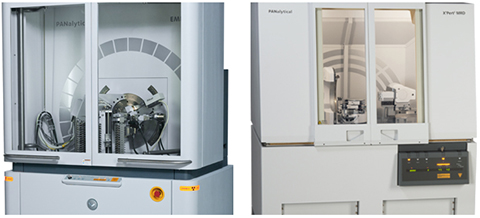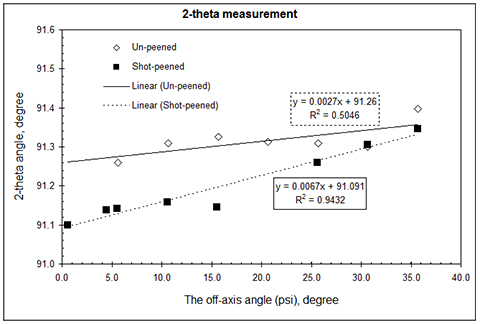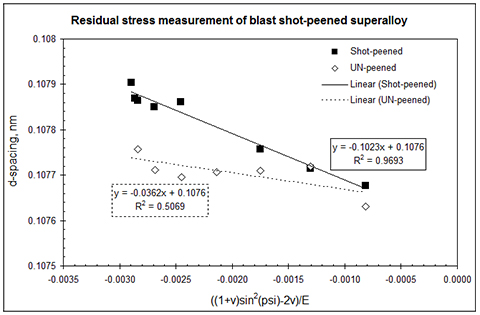X-ray diffraction (XRD)
The facility and software package

The principles of XRD
The fundamental of X-ray diffraction (XRD) is the Bragg equation (2d×sinq= l). This equation defines the diffraction angle of an X-ray beam (having wavelength l) on a crystalline lattice plane, where d stands for its d-spacing. The principal function of XRD is to measure the diffraction beam intensity and the d-spacings of crystalline materials, which however has been developed to determine many structural properties, such as identification of unknown crystalline phases, preferred crystalline orientation (texture), grain size or micro-strain, surface stresses, etc.
Materials capabilities
Lattice constant: XRD provides the most precise measurement of lattice parameters of polycrystallines, including the multilayer period of superlattice coatings, lattice mismatches of coherent intermetallic precipitates (e.g. nickel superalloys);
Phase identification: By identifying a series of diffraction peaks in a detected XRD curve (intensity of diffraction beam plotted vs diffraction angle) and subsequently calculating the related d-spacings, XRD can be used to determine the crystalline structure of un-known phase(s);
Phase quantification: If the intensity of each diffraction peak is quantitatively measured in above experiment, the quantity of phases in a multi-phase material can be determined provided calibration samples are available;
Texture measurement: Measuring the intensity of diffraction peaks and comparing to those data of randomly oriented samples, one can determine the preferred crystalline orientation of polycrystalline materials;
Residual stresses: Using the well-established sin2ymethod, XRD can measure quantitatively the in-plane residual stresses of polycrystalline materials.
Micro-straining and grain size: By quantifying the line broadening of diffraction peaks, XRD can characterize the micro-straining arising mainly from grain boundaries of polycrystalline materials and thereafter estimate the grain sizes.
R&D and industrial
- Advanced high performance PVD coatings and plasma surface engineering materials
- R&D of ultrahigh strength steels
- Long-term aged Nimonic alloys for thermal power generation
- Ceramics: a wide range of oxides, carbides, nitrides, either powder or bulk solids
Sample requirement
XRD works on polycrystalline materials, either powders or block samples.
Example: stress measurement of residual stresses on a shot-peened superalloy surface as compared to an as-manufactured surface of the same alloy.


| Shot-peened | As-manufactured | |
| Residual Stress | -951 MPa | -336 MPa |
| Stress-free d-spacing of the {331} plane | 0.1076 nm | 0.1076 nm |
Selected publications
- High-precision determination of residual stress of polycrystalline coatings using optimised XRD-sin2ψ technique
- Microstructural Stability and Lattice Misfit Characterisations of Nimonic 263
- Structure characterization and tribological study of magnetron sputtered nanocomposite nc-TiAlV(N, C)/a-C coatings
- Carbon partitioning and structure evolution in the hardening
For more information please contact Dr Anthony Bell
